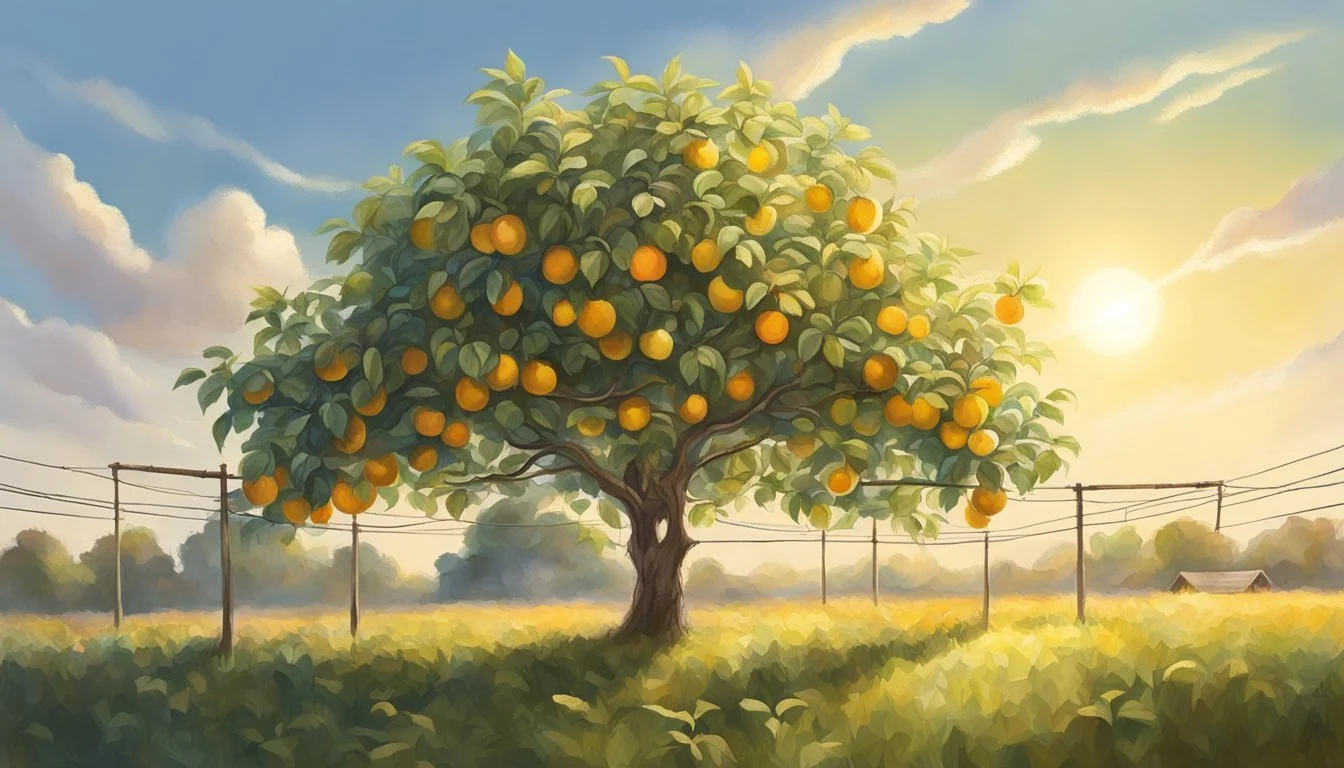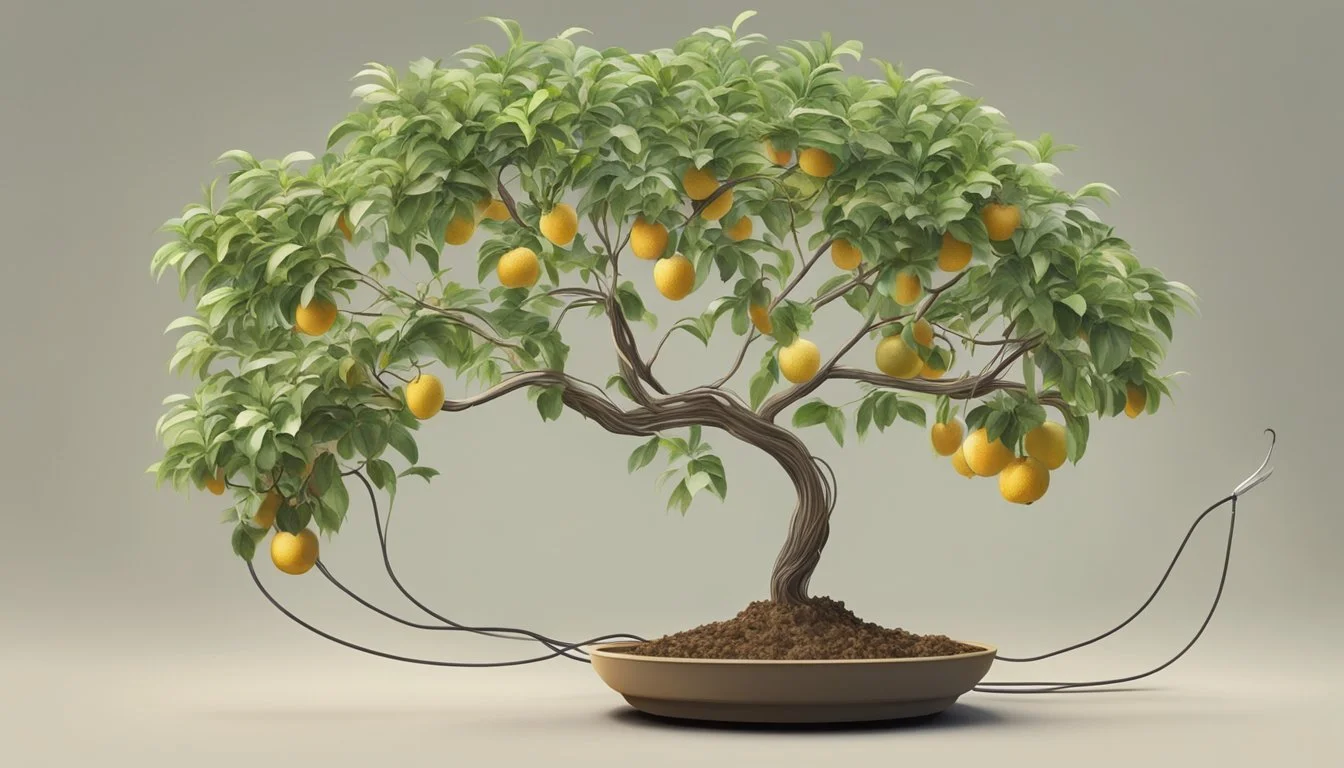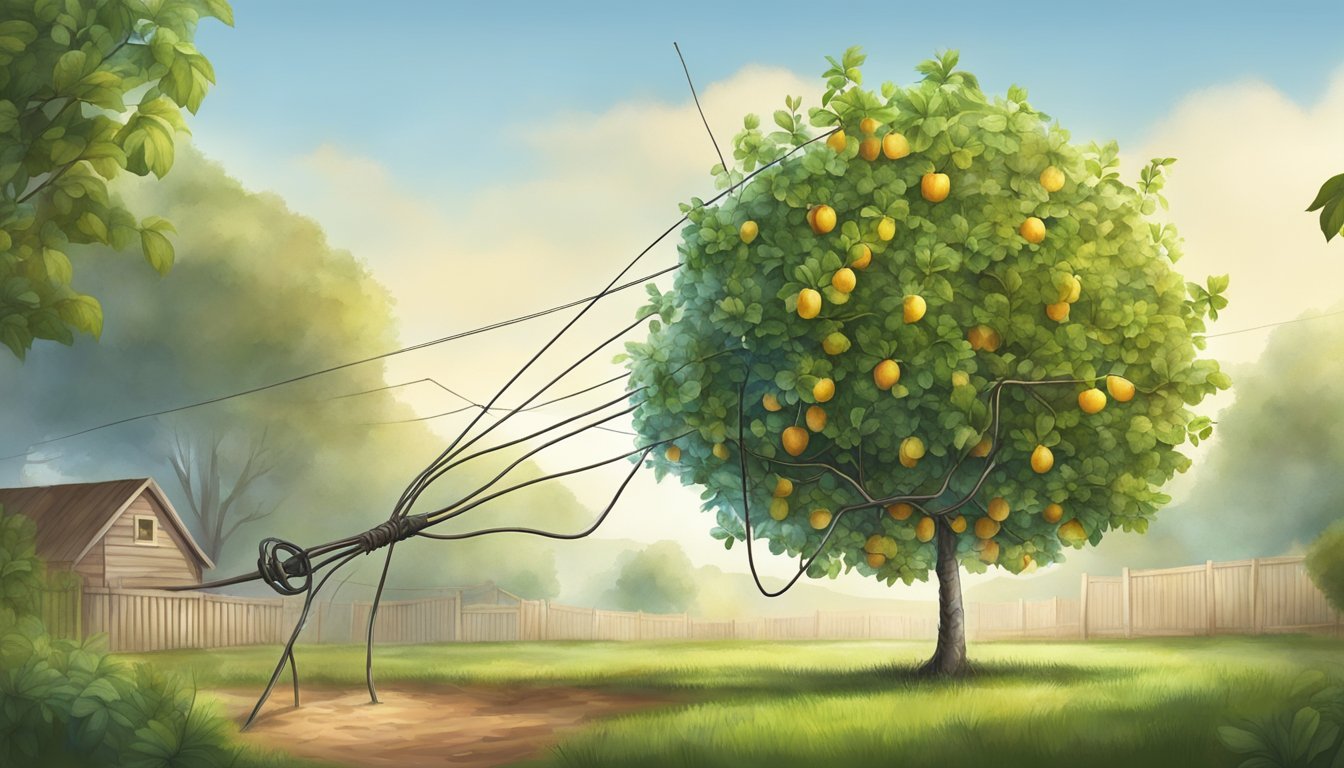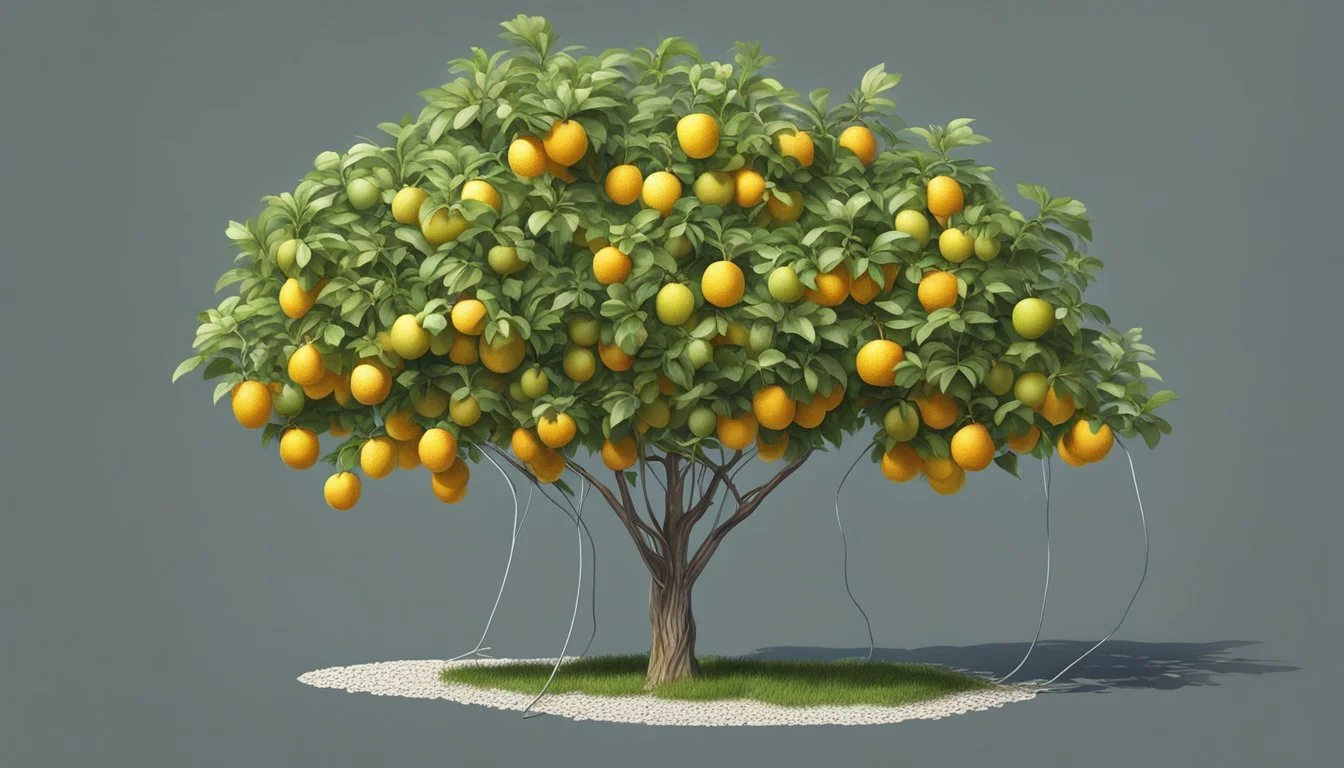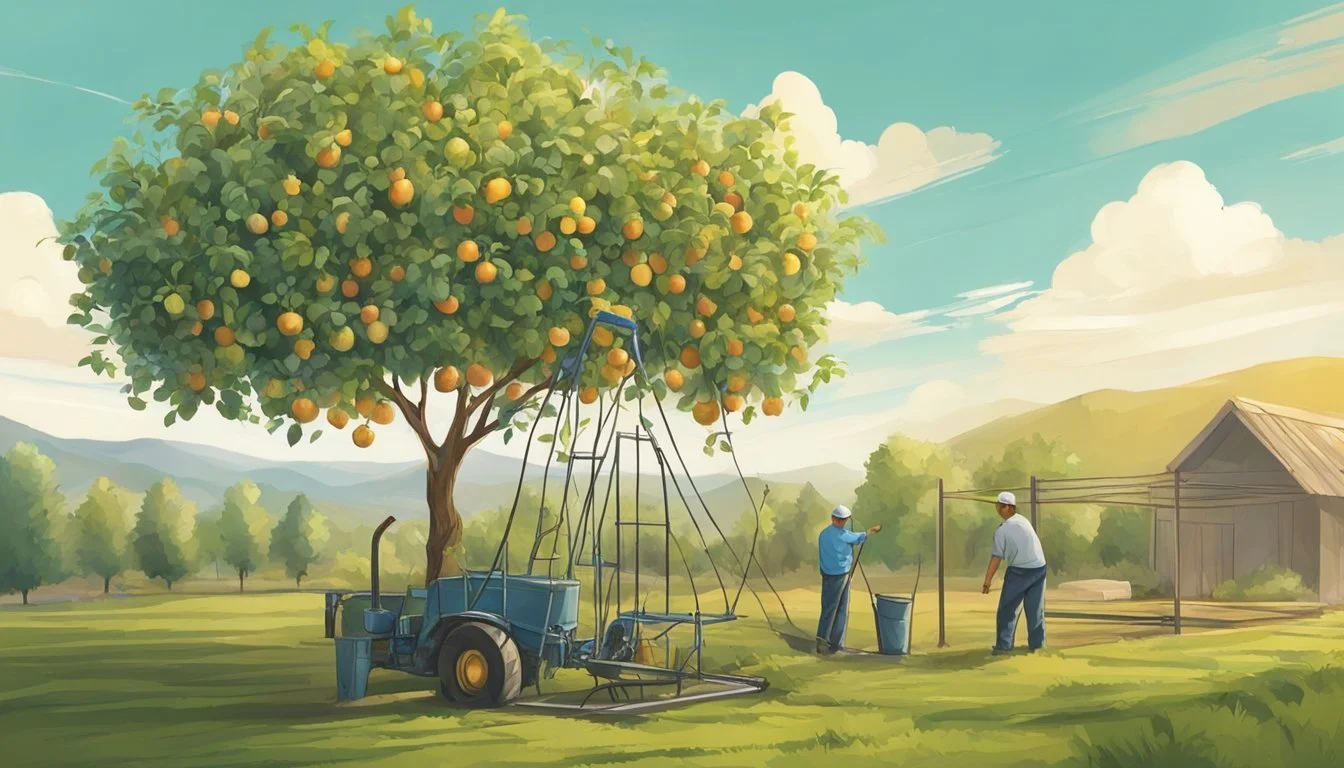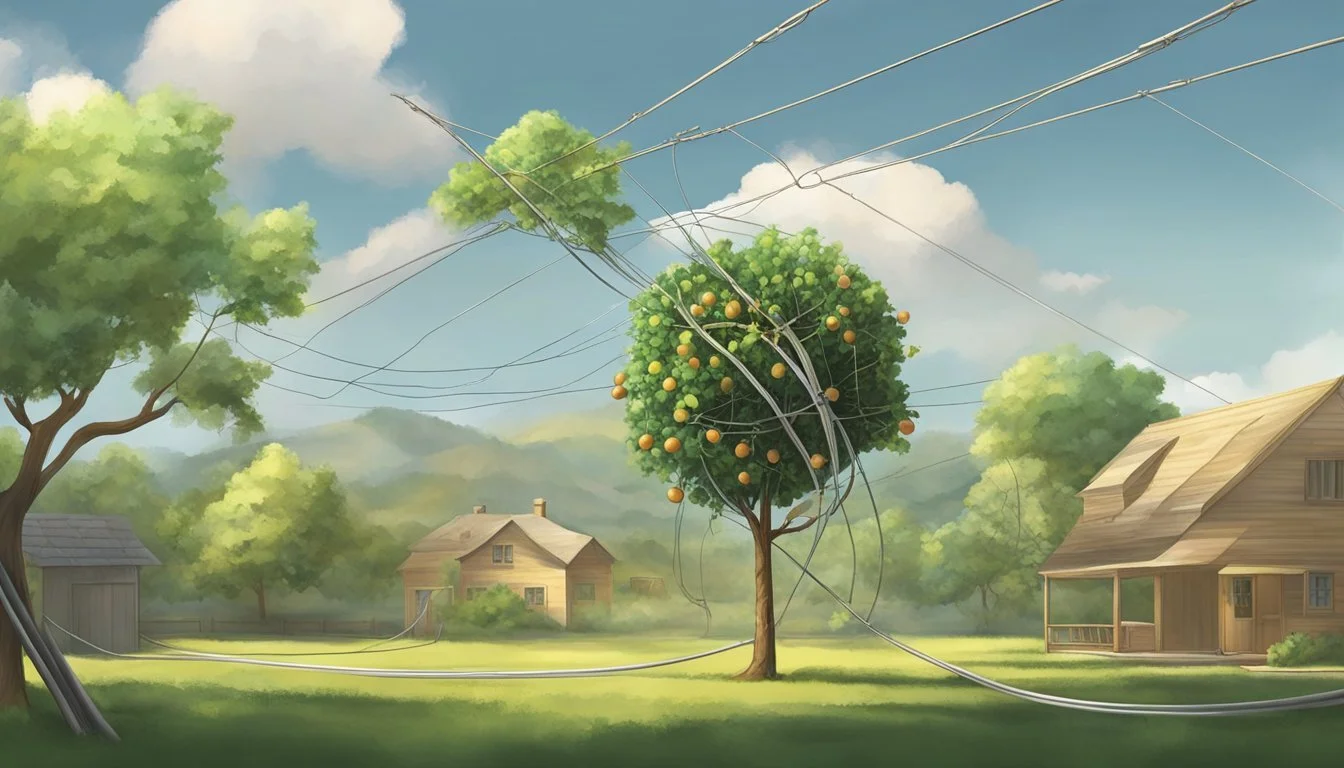The Ultimate Guide to Fruit Tree Training Wires
Key Techniques for Shaping Saplings
Training young fruit (What wine goes well with fruit?) trees is a crucial step in establishing a healthy and productive orchard. The practice involves using wires and other structural supports to shape the developing branches, ensuring that the tree grows in a way that will support its future crop load. This technique not only helps manage the spatial orientation of the branches for ease of harvest and maintenance, but it also promotes better air circulation through the canopy, which is critical in preventing disease.
Despite the initial effort, the long-term benefits of training fruit trees are substantial. A well-shaped tree is more capable of supporting the weight of a full crop and can yield fruit at a younger age than an untrained counterpart. The key is to start the process early, often as soon as the tree is planted, and to continue shaping the tree during the first few years of growth. This establishes a strong framework that will endure throughout the tree's productive life.
It's important to approach this task with the right blend of patience and assertiveness. Overzealous pruning or shaping can set back the growth of the tree, while too little can result in a weak structure that fails under the weight of its own fruit. Striking this balance requires knowledge of both the biology of fruit trees and the techniques for effective training. Given the variety of fruit tree species and the differences in their growth habits, it's essential to understand the fundamental information specific to each type.
Choosing the Right Fruit Trees
When homesteaders aim to shape young fruit trees using training wires, the selection process is fundamental to establishment and future productivity.
Selecting Varieties for Training
Apples and pears are classic choices for training due to their adaptability to various shapes. For instance, 'Honeycrisp' and 'Fuji' apple varieties are not only robust but also amenable to training. Plums, on the other hand, with varieties such as 'Victoria', offer abundant harvests when trained properly. Cherries require careful attention for training, yet with the right techniques, varieties like 'Sweetheart' and 'Stella' can flourish.
Apples and Pears:
'Honeycrisp': Vigorous grower, ideal for colder zones
'Fuji': Sweet and crisp, tolerates training well
Plums and Cherries:
'Victoria' (Plum): Prolific bearer, suitable for espalier
'Sweetheart' (Cherry): Self-fertile, ideal for limited spaces
'Stella' (Cherry): Sweet flavor, excellent for fan training
Evaluating Space and Sunlight Needs
The success of fruit trees greatly hinges on their space allocation and sunlight exposure. A fruit tree requires adequate room for both its roots and canopy to spread. Therefore, space considerations must be accounted for before choosing the tree variety. Typically, dwarf or semi-dwarf varieties of fruit trees are preferred where space is at a premium.
Further, fruit trees require full sun to prosper, meaning at least 6-8 hours of direct sunlight daily. It's crucial to select a planting site that meets these sunlight requirements to ensure the tree's health and maximize fruit production. Homesteaders must therefore evaluate their available space and sunlight exposure to determine the best suited fruit tree varieties for their locale.
Space Requirements:
Dwarf varieties: requires about 8-10 feet of space
Semi-dwarf varieties: may need up to 15 feet
Sunlight Exposure:
Minimum daily requirement: 6-8 hours of full sun
Fundamentals of Tree Training
In the realm of fruit tree cultivation, the development of a well-structured tree is essential for maximizing fruit production. This section provides the reader with foundational knowledge on how to train and prune fruit trees to achieve optimal growth and fruit development.
Understanding Training and Pruning
Training and pruning are two critical aspects of managing fruit trees. While pruning refers to the selective removal of parts of a tree to improve its health and fruit quality, training is the practice of directing the growth of a tree to form a specific shape. The primary goal of training fruit trees is to establish a strong framework of branches that can support fruit production. Pruning, on the other hand, is often done to enhance this structure and to remove any excess growth that may hinder the tree's productivity. Effective training and pruning can reduce the need for future corrective pruning and can also accelerate the time it takes for trees to bear fruit.
Tree Growth and Development Basics
A fruit tree grows and develops through a well-coordinated interaction of hormones and environmental factors. Understanding the basics of tree growth helps in making informed decisions about tree training. The two key hormones involved are:
Cytokinins: Produced in the roots and moving upwards, these hormones promote bud break and cell division.
Auxins: Generated at the tips of new vegetative growth, auxins are responsible for apical dominance, which can influence the tree's shape.
The structure of a young tree is malleable, and manipulation during this stage can establish a strong, balanced framework capable of supporting fruit production for years.
Training Young Trees for Structure
The training process begins as soon as a fruit tree is planted. The early years (usually the first three to four years) of a fruit tree's life are crucial for setting up the structural foundation. A well-trained fruit tree has certain characteristics:
Open canopy: Allows light to penetrate to all parts of the tree, which is vital for abundant fruit development.
Strong scaffold branches: A tree must have a robust set of primary branches that are well spaced and angled to support future fruit loads.
The training techniques may involve:
Staking: To provide support and encourage vertical growth.
Pruning: To remove any competing leaders and to shape the tree.
Branch spreading: To improve light distribution and to encourage the formation of fruiting sites.
Young trees are more responsive to training efforts, setting the stage for a resilient and productive adult tree.
Preparation for Tree Training
Initiating the training process for young fruit trees is critical for ensuring their proper shape and maximizing fruit production. The key steps involve gathering essential tools and materials, and meticulously planning tree placement for optimal growth.
Gathering Necessary Tools and Materials
Before one begins to train their tree, acquiring the correct tools and materials is a must. The following table outlines a basic list:
Tools/Materials: Pruning Shears
Purpose: For precise cutting and shaping of branches
Tools/Materials: Tree Training Wires
Purpose: To guide and hold branches in place
Tools/Materials: Soft Ties or Plant Tape
Purpose: To avoid bark damage while tying branches
Tools/Materials: Support Stakes or Posts
Purpose: For establishing frameworks for espaliers
Tools/Materials: Measuring Tape
Purpose: For proper spacing of wires and branches
Tools/Materials: Gloves
Purpose: To protect hands during the training process
It's crucial to ensure the tools are of good quality to avoid damaging the young trees. Using sharp shears leads to clean cuts that heal better, and soft ties prevent unnecessary stress on the developing branches.
Planning Tree Placement for Optimal Growth
Tree placement should consider factors like sunlight exposure, water availability, and soil conditions, as they're fundamental for healthy growth. Trees should be planted where they receive enough light but are protected from harsh winds.
One should lay out their planting site using the following planning considerations:
Sunlight: Most fruit trees require full sun, meaning at least six hours of direct sunlight daily. They should arrange trees to avoid overshadowing, as this can impede growth and fruit production.
Water: Adequate drainage is important to prevent root rot. Trees should be accessible for watering, especially during the dry seasons.
Soil: Fruit trees thrive in well-draining, fertile soil with a pH usually between 6.0 and 7.0. Testing soil and amending it based on the requirements of the tree species is recommended before planting.
Spacing: Trees need ample space to grow both above and below ground. Future growth should be anticipated to avoid crowding, which reduces air circulation and can lead to disease.
Thorough preparation in these areas sets a solid foundation for successful fruit tree shaping and is a testament to the gardener's foresight and dedication to their craft.
Training Techniques and Systems
Fruit tree training is a critical horticultural practice determining the structure and health of the tree. By manipulating the growth of branches, one can control the shape of the tree, enhance sunlight penetration, and optimize fruit production.
Espalier Training Methods
In espalier training, branches are trained to grow along a flat plane, often against a wall or trellis. This system promotes sunlight exposure and air circulation, making it ideal for maximizing space and enhancing the aesthetic appeal of an orchard. Key methods:
Horizontal Tiers: Branches are trained horizontally at successive levels.
Vertical Cordon: Trees grow in a vertical line with short lateral branches.
Central Leader vs. Open Center Training
Central Leader Training creates a single, dominant trunk that extends vertically with branches spiraling out, resembling a Christmas tree shape. This technique offers strong vertical growth and is suitable for apples and pears.
Pros: Good light penetration, robust tree structure.
Cons: May require more vertical space.
Open Center Training, also known as a vase shape, encourages several main branches to grow outwards and upwards from a short trunk, leaving the center open.
Pros: Facilitates sun exposure and air circulation.
Cons: Less vertical, more spread out, can be more vulnerable to wind damage.
Fan and Cordon Training Systems
Fan Training spreads the branches out in a fan shape, which is useful for trees like peaches and cherries that may not have a strong central leader. This system aids in evenly distributing sunlight and is preferred on walls or fences.
Structure: A central trunk with radiating branches.
Maintenance: Regular pruning is important to retain the fan shape.
Cordon Training is suited for training fruit trees to grow as single or multiple vertical stems. It is ideal for trellis growing and espalier.
Single Cordon: A lone stem trained vertically, often used for apples and pears.
Multiple Cordons: More than one main stem trained on an angle or vertically.
With these techniques, fruit tree training wires aid in the process, guiding and supporting branches to grow in the desired direction and shape. Proper use of these methods significantly boosts fruit quality and ease of harvest.
Implementing Training Wires
Training wires are integral to shaping young fruit trees and guiding their growth. They provide a framework that encourages straight growth and supports the development of lateral branches.
Installing Training Wires
To establish a training wire system, gardeners must first decide on the training frame structure suitable for their fruit tree varieties. A simple yet common setup involves wires stretched horizontally across posts or along walls. Installation steps include:
Setting Posts or Using Existing Structures: Posts should be spaced appropriately, generally about 15-20 feet apart. Meanwhile, walls or sturdy fences can also serve as support structures.
Affixing Wires: Galvanized wire is recommended for durability against the elements. Wires are to be affixed to posts using eye bolts or to walls using battens or angled metal brackets, ensuring they stand out 2-4 inches (5-10 cm) from the surface.
Fruit Tree Shape: Diagonal Cordons
Wire Spacing: Every 6-10 inches
Fruit Tree Shape: Espalier
Wire Spacing: Every 12-18 inches
Fruit Tree Shape: Fan
Wire Spacing: Every 15-24 inches
Using Ties and Supports
Once the wires are in place, gardeners can use them to direct the growth of the fruit tree. Key methods involve:
Securing Branches: Soft, flexible ties or plant tape should be used to fix young branches to the wires gently. Over-tightening ties can damage the tree's bark and growth.
Adjusting for Growth: Ties should be checked and adjusted regularly to accommodate increasing branch diameter and to prevent constriction.
The effective use of training wires and ties allows for the optimal shaping of fruit trees, promoting health and productivity in a homestead orchard.
Pruning for Fruit Production
Proper pruning enhances fruit production by ensuring a healthy tree structure and maximizing exposure to light and air. Effective pruning strategies focus on the timing of cuts, thinning for optimal spacing, and ongoing maintenance for tree vitality.
Winter and Dormant Pruning Strategies
Winter provides an ideal opportunity for dormant pruning, typically done when trees are at rest between late fall and early spring. During this period, the lack of foliage offers a clear view of the tree structure, allowing for precise cuts to shape the tree and stimulate fruitful growth. Decisions on which branches to remove should be made to promote a sturdy framework that can support a bountiful crop.
The following steps outline dormant pruning for fruit production:
Identify and remove any dead, damaged, or diseased wood.
Cut back the previous year's growth on main branches to encourage new fruiting branches.
Prune to shape the tree, keeping the center open to allow for sunlight penetration and air circulation.
Thinning to Enhance Light and Air Flow
Thinning is crucial for reducing branch density, which in turn enhances light penetration and air circulation — both vital for quality fruit production. The goal is to space the branches so they are not competing for resources or creating shaded areas within the canopy.
To achieve optimum thinning:
Remove select branches altogether to improve light access to the tree's interior.
Shorten side branches; this encourages fruiting spur development in species like apples and pears.
Focus on branches with narrow crotch angles, as these are weaker and more prone to breaking.
Maintenance Pruning for Tree Health
Maintenance pruning mitigates risks of disease and pest infestation by removing potential problem areas. Healthy trees are more resilient and produce higher quality fruits.
Maintenance pruning practices include:
Regular inspection for any signs of disease or pest damage.
Prompt removal of affected limbs and branches to prevent spread.
Annual pruning to prevent overcrowding, which can lead to a decline in the tree's overall health and fruit quality.
Implementing these targeted pruning practices supports a fruitful harvest by maintaining the health and structure of the tree throughout its lifecycle.
Ongoing Tree Care and Maintenance
Effective fruit tree care and maintenance involves a strategic approach to watering, fertilizing, defending against pests and diseases, and periodically reviewing growth to make timely adjustments. This ensures the health, vitality, and productivity of fruit trees over time.
Watering and Fertilizing Regimens
Watering: Consistent hydration is crucial for fruit trees, especially during their growing season. Newly planted trees require regular watering until their root systems are established. Mature trees need watering during dry spells. The specific watering frequency and volume should be tailored to the soil type and weather conditions, ensuring the root zone receives adequate moisture without becoming waterlogged.
Fertilizing: Fruit trees benefit from annual fertilizing to replenish nutrients and enhance their energy for growth and fruit production. The type and amount of fertilizer depend on the soil's nutrient profile and the tree's age. An application of a balanced, slow-release fertilizer in early spring supports new growth, while avoiding fertilization in late summer can prevent tender growth that's susceptible to winter damage.
Protecting from Pests and Diseases
Pests and diseases can compromise a fruit tree's health if not managed properly. Regular monitoring is key to early detection and treatment. Safe and effective protection strategies include:
Physical Barriers: Nets and traps can prevent pests from reaching the trees.
Organic Sprays: Neem oil and insecticidal soaps can deter pests without harming beneficial insects.
Disease Prevention: Ensuring good air circulation through proper pruning and choosing disease-resistant varieties can minimize the risk of infection.
Assessing Results and Making Adjustments
The health of fruit trees is reflected in their growth and fruiting patterns. It is important to:
Examine Growth: Check for strong, well-spaced branches that can support fruit without risk of damage.
Review Fruit Production: Analyze quantity and quality of fruit to determine if adjustments in care are required.
These ongoing assessments inform necessary changes, such as increased water during drought or additional nutrient applications if growth is lackluster. A responsive care regimen supports robust fruit trees capable of producing high-quality yields.
Advanced Topics in Training
While training fruit trees, the gardener's expertise is reflected in the tree’s health, fruit production, and visual appeal. This section delves into nuanced methods that can elevate an orchard's beauty and productivity to an art form.
Creating Aesthetic Appeal in the Garden
The art of shaping fruit trees extends beyond functionality; it incorporates aesthetic considerations to create a visually pleasing orchard. Key approaches include:
Symmetry and Balance: By training trees into geometric forms using wires, one can achieve symmetrical designs that enhance the overall garden appearance.
Color Blocking: Positioning fruit trees with consideration to the changing colors of foliage and fruit can lead to a stunning seasonal display.
Special Techniques for Unique Tree Shapes
Certain fruit trees benefit from specialised training techniques to achieve unique forms. These include:
Espalier: A method involving horizontally training trees along wires or trellises, resulting in a flat, two-dimensional form ideally suited for fences and walls.
Cordon: Trees are trained to grow in a single, straight line, a technique often used for apples and pears to maximize space and sunlight exposure.
Training and Pruning for Specialized Fruit Varieties
Different fruit species demand specific training and pruning approaches for optimal growth and fruiting:
Stone Fruits: Such as peaches, require pruning for strong, open centers to expose the wood to more sunlight, which is key for fruit development.
Pome Fruits: Apples and pears thrive with central leader and modified central leader systems, which help establish a robust scaffold for bountiful harvests.
By mastering these advanced topics in fruit tree training, gardeners can ensure their orchard is both an aesthetic masterpiece and a haven for healthy, productive fruit trees.
Harvesting and Post-Harvest Tree Care
Harvesting fruit trees and providing post-harvest care are critical for maintaining tree health and ensuring future productivity. Proper techniques during these stages are paramount for high-quality fruit yield and the vitality of fruiting spurs.
Techniques for Efficient Harvesting
When harvesting fruit trees, one must adopt methods ensuring the safety of fruiting spurs, which play a crucial role in the tree's productivity. Utilizing gentle twisting motions rather than pulling can prevent damage to these delicate structures. For larger fruits like apples and peaches, harvesting with their stems attached is advantageous, minimizing the risk of infection at the stem attachment.
Apples/Pears: Harvest when the color is good and the fruit separates easily from the branch with a gentle upward twist.
Stone Fruits: Collect when they detach with a slight twist and have a characteristic fruit-specific firmness and aroma.
Citrus: Harvest once the fruit achieves the desired color and comes off the stem with moderate resistance.
Post-Harvest Pruning and Training
After harvest, attention turns to pruning and training fruit trees to promote health and productivity. A well-thought-out pruning strategy is integral, as it contributes to the tree structure, allows light penetration, and encourages the development of new fruiting spurs.
Immediate Post-Harvest: Remove any damaged or diseased limbs to prevent the spread of pathogens.
Winter Pruning: Thin out crowded areas to improve light exposure and air circulation, which are essential for the tree's health.
Training: Use wires and ties to guide young branches into desirable shapes, supporting productive tree frameworks.
By adhering to these practices, one ensures that the fruit trees are primed for a successful dormant period and are in the best possible condition for the forthcoming growing season.
Troubleshooting Common Issues
When shaping young fruit trees with training wires, gardeners may encounter specific problems that impede proper growth and training. This section offers solutions for overcoming these hurdles, ensuring the healthy development of the young trees.
Tackling Growth and Training Challenges
Stunted Growth: When a tree exhibits sluggish growth, it's crucial to inspect the root system and soil conditions. One should ensure that:
The soil has adequate fertility.
Proper irrigation practices are in place.
Incorrect Wire Tension: If branches aren't shaping as desired, it may be due to the tension of the training wires. Adjust them carefully to:
Avoid damaging the tender branches of a young tree.
Achieve the necessary angle for optimal growth.
Addressing Pruning Mistakes
Over-Pruning: When too much of the tree is removed, it can result in weakened structure and reduced fruit production. The key steps for correction include:
Immediately ceasing further pruning.
Providing the tree with adequate water and nutrients to promote recovery.
Improper Cut Location: Incorrect pruning cuts can lead to disease entry and poor wound healing. Always ensure to:
Make cuts just above a bud or branching point.
Use sharp and sanitized pruning tools for clean cuts.

